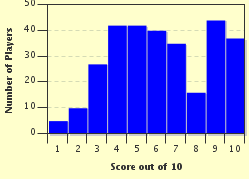Quiz Answer Key and Fun Facts
1. The pictured currency was in use from 1832 until 2001 in which European country?
2. The peso (or piso) is widely used in former Spanish colonies. Which country that uses this currency issued the pictured banknote highlighting the Tubbataha Reefs Natural Park?
3. The pictured banknote has a value of 20 tögrögs. To which Asian country would you need to travel in order to spend it?
4. Wildlife is a common theme on many African currencies. Which country, the second-largest in Africa, issued the pictured banknote?
5. Most countries issue commemorative stamps, but few do the same thing with their banknotes. Which former Soviet republic issued a special 2,000 tenge banknote (pictured) in 2011 to commemorate staging the 7th Asian Winter Games in their capital?
6. The banknotes of many countries carry portraits of their head of state, so fresh designs are needed when a new monarch ascends to the throne. The pictured note, issued in 2003, has the picture of the man who had become king in 1999. Which country issued it?
7. The pictured banknote depicts the Khabarovsk Bridge, built across the world's tenth-longest river in 1999. Which country issued this banknote?
8. Which country in the Americas issued a series of banknotes highlighting the country's diverse wildlife in 1994? The pictured note shows the Great Egret.
9. Which European country issued this colourful set of banknotes in 2005? The 100L value (pictured) honors the country's great playwright and poet Ion Luca Caragiale.
10. One of the newest European currencies is the hryvnia, introduced in 1996 with a colorful series of banknotes. The reverse of the 200h (pictured), added in 2001, depicts the entrance tower of Lutsk High Castle. Which country uses the hryvnia?
Source: Author
EnglishJedi
This quiz was reviewed by FunTrivia editor
stedman before going online.
Any errors found in FunTrivia content are routinely corrected through our feedback system.

